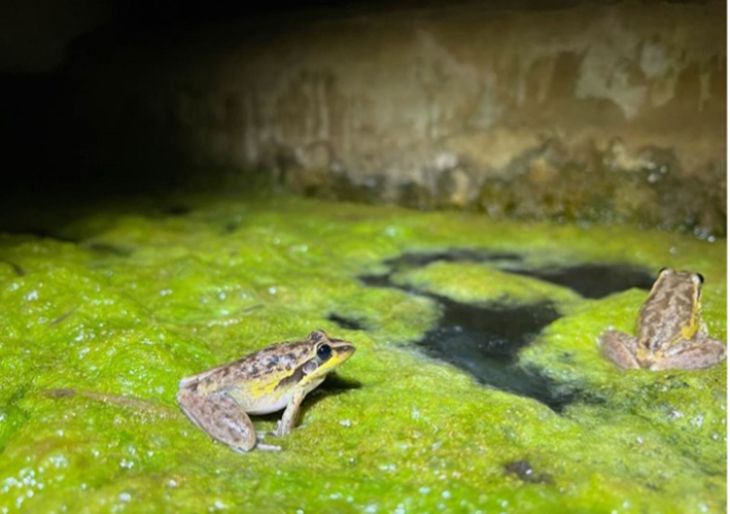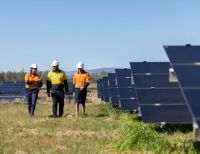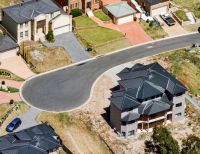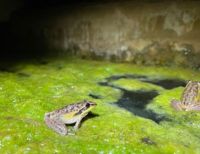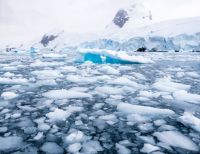The world's largest frog project has thrived because of citizen scientists using the FrogID app, the brainchild of a UNSW biologist.
FrogID, an app citizen scientists use to help record and count Australia’s frog population, has reached a new milestone by logging one million validated frog records. The 1,000,000th frog record was of a Spalding’s rocket frog recorded about 50kms from Cloncurry, north-west Queensland by volunteer citizen scientist, Dr Elliot Leach.
Lead scientist behind FrogID, Dr Jodi Rowley who is with UNSW Sydney’s School of Biologial Earth and Environmental Sciences and is curator of Amphibian and Reptile Conservation Biology at the Australian Museum, said she was thrilled and grateful to the tens of thousands of FrogID users across Australia who helped achieve this milestone.
“This is testament to the incredible contribution of citizen scientists right across the country. FrogID has changed attitudes towards frogs and created opportunities for communities, schools and families to learn, participate and contribute towards the research and conservation of Australia’s unique amphibians. It is inspiring and encouraging to see such interest in our precious frogs,” Dr Rowley said.
Dr Rowley, who verified the millionth call, said Spalding’s rocket frog sounds a little like a chicken combined with a lawnmower.
“It’s an unmistakable sound,” she said.
“However, there are few recordings of this species in Queensland. It only calls during the wet season from Litchfield National Park in the northwest of the NT to far northwest Queensland near the Gulf of Carpentaria. Elliot Leach’s submission is also the first FrogID submission from the area, effectively increasing FrogID’s spatial coverage to 36.5 per cent of continental Australia.”
Volunteer citizen scientist, Dr Elliot Leach was a newcomer to the FrogID app and recorded the Spalding’s rocket frog while working near Cloncurry, Queensland.
“I heard the frog calling from over 100 metres away. It is such a distinctive sound – I knew immediately it was a new species for me,” Dr Leach said.
NSW Minister for Arts, Music, Night-time Economy, Jobs and Tourism, the Hon John Graham described FrogID as a truly inclusive and innovative environmental program, allowing the general public, the Australian Museum and UNSW to actively work together to ensure frogs have the best chance of surviving in the wild.
“The FrogID app, and the data collected from one million frog records, are an inspiring example of how technology and science can empower Australians to tackle important environmental issues,” Minister Graham said.
Created and devised by Australian Museum (AM) Director & CEO, Kim McKay AO and Dr Rowley, the AM launched FrogID in 2017 with the purpose of creating a database of frog records and associated audio files to assist in the conservation of Australia’s distinctive amphibians.
Ms McKay said this milestone was made possible by more than 45,000 interested and concerned volunteer citizen scientists.
“Emphasising science and technology, the free FrogID app is at the heart of our nation-wide program. Initially developed with the assistance of IBM and the Federal Government, the GPS technology used in the free FrogID app has allowed thousands of Australians of all ages to contribute to this vital national citizen science project,” she said.
Canary in the coalmine
Director and Chief Scientist of the Australian Museum Research Institute, Professor Kris Helgen, said frogs are not only charismatic and colourful animals, but important for healthy ecosystems.
“Because frogs are highly sensitive to environmental change, including pollution, land and water use, and climate change, they are key indicators of the health of our environment,” he said.
“With 249 native frog species in Australia including many in serious decline, there is a critical need to better understand our frogs and their habitats. They are the ‘canary in the coalmine’ for Australian ecosystems.”
Helping people identify frogs in the wild is just part of the FrogID project. FrogID submissions have helped identify five new species, produced more than 20 research papers and even inspired an ARIA nominated album.
“Next steps in the FrogID project will be carefully drawing on artificial intelligence to further help our researchers identify species calling. We're using this enormous library of frog calls that everybody's helped create, to use machine learning so that we'll be able to identify Australian frogs more quickly and effectively,” Dr Rowley said.
“Anyone in Australia can contribute to the FrogID project by downloading the free phone app, pressing record using the app whenever they hear a frog, and submitting to the AM’s team of researchers. The power to save frogs is in the palm of your hand.”

